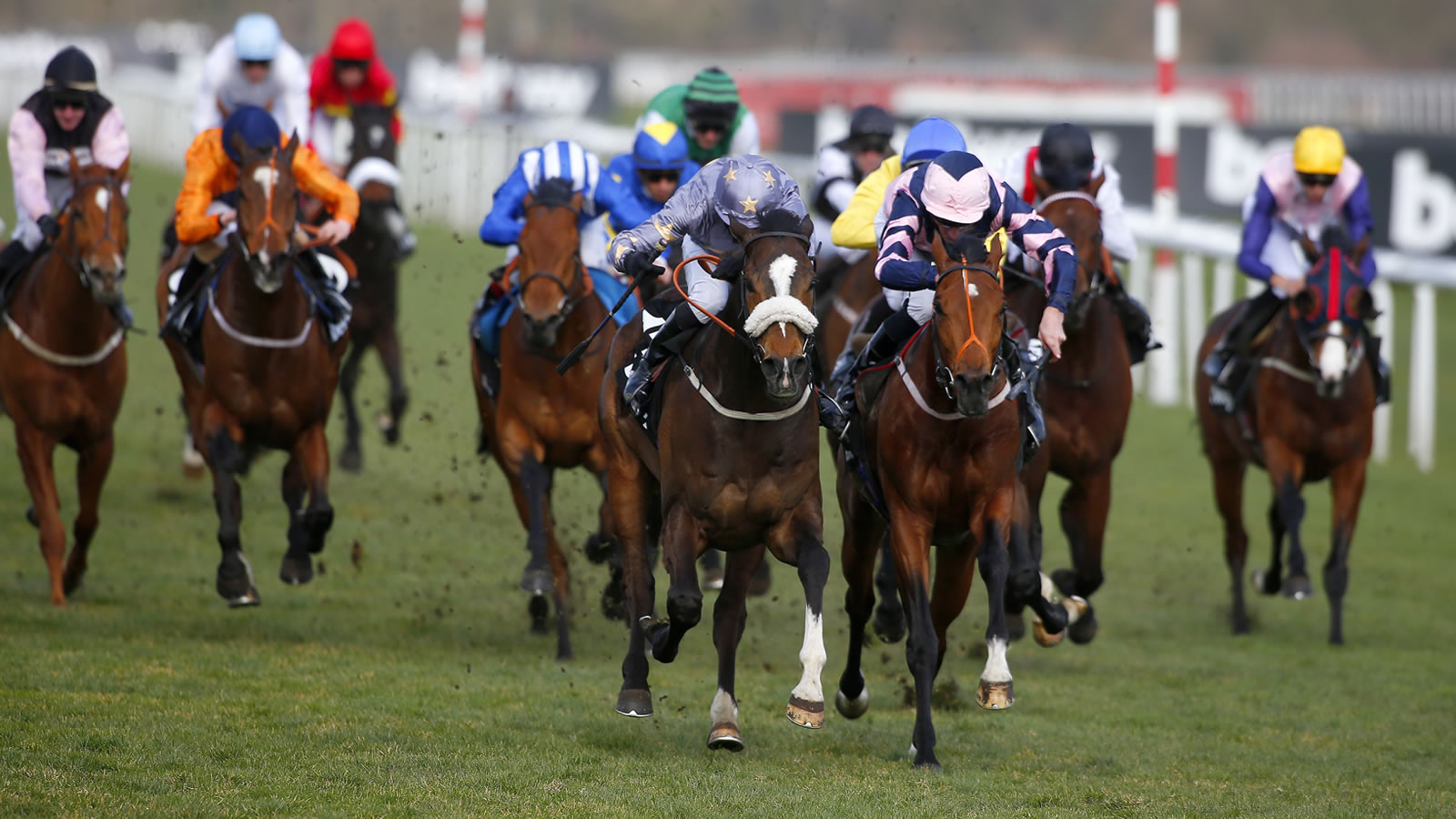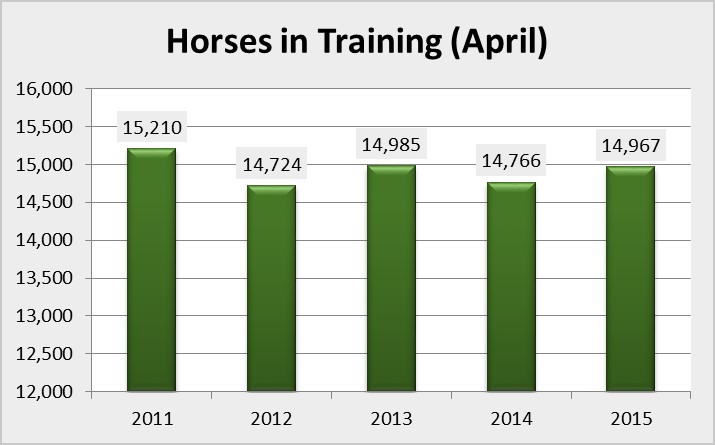Spotlight on April Field Sizes

April has been a challenging month in terms of maintaining the improvements we have seen in field sizes since the turn of the year. A key factor was the weather, with April 2015 being declared the warmest on record and in which most of the country received less than half the average rainfall expected; this undoubtedly had an impact on field sizes.
April, with the return of Flat Turf racing and a busy Jump programme, was also the first month of 2015 outside of the designated ‘pinch-point’ of January to March, a period in which field sizes have previously struggled. The measures to address this that were implemented in the opening three months of the year no longer applied in April. So, although average field sizes have shown a marginal decline through April (dropping from 8.49 to 8.43 since the beginning of the year), there is still a great deal to be positive about in terms of the latest trends, writes Antonia Newman.
Headline Points
Year to date we are seeing improvement in terms of reducing the number of small field races (i.e. the failure rate), which is down from 17.4% to 16.1% on this time last year, whilst there has also been an increase in fields attracting 8 or more runners (i.e. the success rate) which has improved to 56.1% from 55.4% in 2014.[1]
[1] Failure Rate = Percentage of races run with fewer than 6 runners
Success Rate = Percentage of races run with 8 or more runners

The number of horses in training in April has also increased by 201 individuals on 2014 (+1.4%), boosted by not insignificant rises to the number 4yos in training over Jumps (+13.3%) and the 2yo horse population on the Flat (up by 5.4%).
Moreover extended prize money payments continue to be made to placed horses via the Additional Voluntary Contribution (AVC) Fund. This initiative commenced on 1 December 2014 and was designed to assist with covering the cost of sending a runner to the racecourse with the ultimate aim of growing field sizes. A comprehensive review of the performance of this initiative against agreed KPIs will take place in June, with full details of the extended prize money scheme also available here.
Focus on Jump Racing
Over Jumps the growth in horses in training, coupled with an increase in races run (+64 races for the first four months of the year in large part due to fewer abandonments) has resulted in:
- A greater number of entries, declarations and runners (all up by around 2%);
- Fewer eliminations (-10.6%) and non-runners (-6.9%);
- More individual runners (+153 horses); yet
- Average field sizes have declined from 8.62 to 8.48 (or -1.6%).
The unusually warm and dry April did undoubtedly have an impact on the number of runners. Jump field sizes struggled in particular during the week of 19 to 24 April when four Jump fixtures, all run on going described as Good to Firm, attracted fewer than 6 runners in over half of their programmed races. As we make the transition into Summer Jumping, going is likely to have more of an influence on the success and failure rates of races, yet it is pleasing to see a higher percentage of horses having their first run in April since the end of last summer’s campaign (up from 7% to 20%) as trainers prepare runners for the Summer Jumping programme ahead.
On the Flat
Two-year-old horses continue to make up a large part of the increase in Flat horses in training to date. Looking at the most recent month in isolation, there are 180 more Flat horses in training in April 2015 compared with the start of the Flat Turf season last year. The majority of those animals are 2yos (at 160 extra horses), yet it should also be noted that there has been a slight increase in 3yos and 4yos (+ 92 horses overall) but a decrease in the number of older horses (-72) aged 5 years old and up.
Despite the increase in Flat horses in training being predominantly driven by 2yos, Racing has not yet seen the benefits in terms of field size out on the track. Whilst the average field size on the Flat has held at 8.3, looking at 2yo only races in isolation shows:
| 1 Jan to 30 Apr | 2014 | 2015 |
| 2yo Races | 37 | 38 |
| Runners | 339 | 225 |
| AFS | 9.16 | 6.71 |
| Success Rate | 64.9% | 36.8% |
It is likely that an unseasonably dry spring could well have impacted on trainers’ preparation of 2yos on grass. Even so, it is generally agreed that there is little reason why the majority of these 2yos should not eventually make it to the track, hence we can continue to be optimistic about the potential for further improvement in field sizes on the Flat.
Download the Data Pack
The latest monthly data pack covering the period from 1 January to 30 April can be downloaded here: https://www.britishhorseracing.com/wp-content/uploads/2015/04/April-data-pack-webste-2015.pdf
